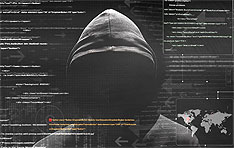Spy Wars
Introduction
One of the biggest problems we deal with on a daily basis has to do with the scourge of Spyware, Malware, Adware and other malicious programs found on ninety percent of all computers we see. It is almost impossible for the average Internet user to completely avoid these threats all the time
Recent Top 10 Spyware Threats
- Trojan-Downloader.Zlob.Media-Codec – 1.58%
- Trojan.FakeAlert – 1.35%
- Virtumonde – 1.31%
- ClickSpring.PuritySCAN – 0.72%
- VirusBurst – 0.43%
- SpyLocked – 0.33%
- 180solutions.SearchAssistant – 0.31%
- Trojan.Unclassified.gen – 0.30%
- Trojan.Smitfraud – 0.29%
- WinAntiVirusPro – 0.29%
Recommended Removal Tools: Sunbelt CounterSpy Webroot Spy Sweeper Ad-Aware Pro
Computer Malware
Computer Malware is a term given to all forms of Computer Software designed specifically to damage or disrupt a computer system. To put it simply, the word malware comes from the abbreviated term to describe “malicious software.” It is any software that is harmful to a computer user. Along with viruses, malware may be one of computer users’ biggest threats on the Internet. Malware includes spyware and adware programs which can be used to track your surfing habits and create those nasty pop-up advertisements, as well as hijacking your browser and installing unwanted toolbars.
Virus
- The 'virus' be able to must execute itself. The virus will often place its own code in the path of execution of another program.
- The 'virus' must be able to replicate itself. For example, it may replace other executable files with a copy of a virus infected file. Viruses can infect desktop computers and network
servers alike.
Can be programmed to perform many actions, for instance some viruses have destructive payloads such as deleting files or formatting of hard disks. Some viruses do not have any destructive payloads, they quite simply replicate themselves, some make themselves known by displaying a message or playing audio. Even these benign viruses can cause problems for the computer user. This is simply because they will by their nature alter elements of programs in order to replicate that in some environments could cause system stability problems. In addition many viruses contain bugs, which could result in system stability problems and data loss.
Programs classified as spyware send information about you and your computer to somebody else. Some spyware simply relays the addresses of sites you visit or terms you search for to a server somewhere. Others may send back information you type into forms in Internet Explorer (or other web browser) or the names of files you download. Still others search your hard drive and report back what programs you have installed, contents of your email client’s address book (usually to be sold to spammers), or any other information about or on your computer — things such as your name, browser history, login names and passwords, credit card numbers, and your phone number and address. The latter is often done by way of software that is known to log your keystrokes.
Adware is the class of programs that place advertisements on your screen. These may be in the form of pop-ups, pop-unders, advertisements embedded in programs, advertisements placed on top of ads in web sites, or any other way the authors can think of showing you an ad. The pop-ups generally will not be stopped by pop-up stoppers, and often are not dependent on your having Internet Explorer open. They may show up when you are playing a game, writing a document, listening to music, or anything else. Should you be surfing, the advertisements will often be related to the web page you are viewing.
Hijackers take control of various parts of your web browser, including your home page, search pages, and search bar. They may also redirect you to certain sites should you mistype an address or prevent you from going to a website they would rather you not, such as sites that combat malware. Some will even redirect you to their own search engine when you attempt a search. It should be known: Hijackers almost exclusively target Internet Explorer. /p>
Toolbars plug into Internet Explorer and provide additional functionality such as search forms or pop-up blockers. The Google and Yahoo! toolbars are probably the most common legitimate examples, and malware toolbars often attempt to emulate their functionality and look. Malware toolbars almost always include characteristics of the other malware categories, which is usually what gets it classified as malware. Any toolbar that is installed through underhanded means falls into the category of malware
How Does A System Get Infected Malware can attack multiple ways. The technology (spyware, trojan, rootkit) and the attack vector (fake software, e-mail attachments, direct hacking) has remained the same. It's the intent that is different, malware always has some type of fraud behind the purpose of distribution. Some examples of how malware works.
You download a cool calculator program and install it. The calculator works fine. In a few days you start to have problems with your computer and when you search on the internet you start to get annoying pop-ups. Then you start to get popups at random when you are not searching the internet. The malicious pop-up program was most likely hidden away inside the calculator program. The installation also may have implanted itself inside programs that already existed on your computer. This makes it difficult to remove. Rootkit in e-mail attachment
Your friend sends you a funny video, when you double click on it you get a security warning, but you want to see it so you click OK to get past the warning. However nothing happened, you think nothing of it..maybe it was a bad copy.
Later you talk to your friend however he says he didn't send you a video. Something did happen in the background when you clicked on the video, malware was installed. There is no way to know the intent behind it. You may not notice anything, your computer could be used as a bot net drone to attack web sites or other computers.
You click on a link in search results and immediately get pop-ups. You close the pages but get weird errors. You think nothing harmful could have come of it, you simply "drove by" the website. You didn't install anything. However your computer had a software flaw that let the website install spyware without your permission. You didn't get a warning because it was a flaw in the programming of the web browser. You now have spyware resident on your system. What you type in web forms, login pages, chat and what sites you visit could all be sent to the hacker's website.
Here are a few tips to avoid:
- Don’t use file sharing applications. Avoid Limewire, Bearshare, or Kazaa on a program list in a PC we find malware approximately 100% of the time. There is simply no way to safely download with these programs because you can’t trust the source.
- Never open an email attachment if you don’t know what it is. Even if you know the person who sent the email beware of attachments. Many computers with infections will send out email to everyone on their address book without the owner ever being aware.
- If you get pop-ups when opening a web page don’t click inside the pop-up to close it. Always click the red “x” in the upper right corner. The “cancel” or “close” button in the pop-up might have unintended effects.
- If you get a message from your computer warning you that it is infected and you need to download suchandsuch software to remove the virus, don’t do it. At this point you are already infected, downloading the fake virus remover will only make it worse. No legit software ever uses this tactic.
- Avoid free downloads unless you are absolutely sure you can trust the source. Often these freebies are packaged with a good deal of adware, so be careful.
Most of the time good common sense will keep your computer safer than whatever virus protection you have installed. Start practicing safe web viewing and you will find you rarely have a problem with malware.







